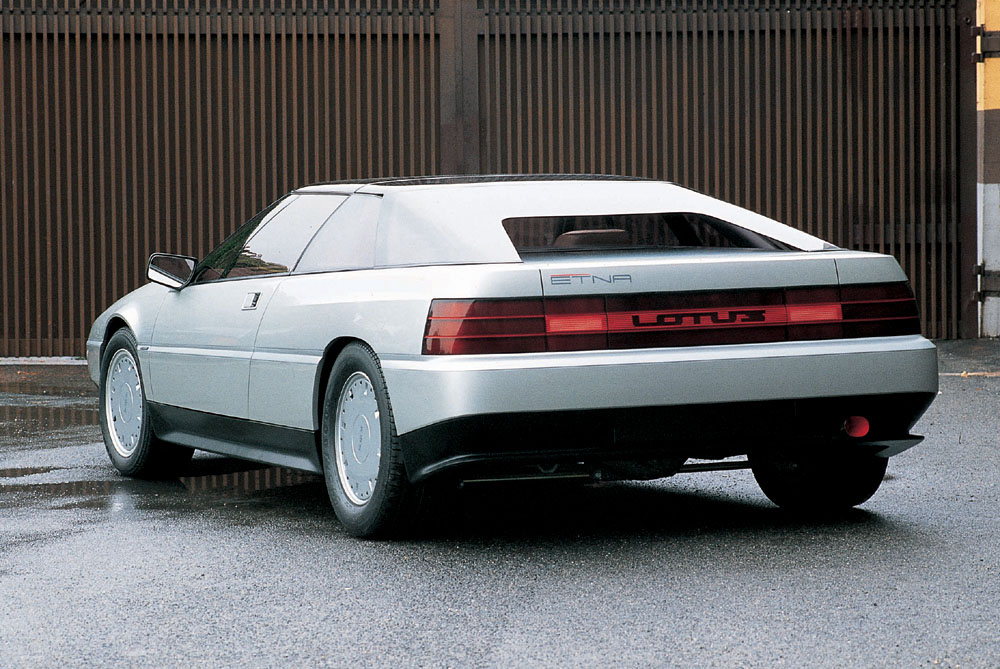Wednesday, March 30, 2011
Thursday, March 03, 2011
Ladies and Gentlemen: Jason Castriota and the Post-Functional World!

Remember discipline?
For a while, from the late 1960s through the '80s, the notion played a role, at least. I'm talking super/concept cars here. Even the most outrageous, impractical designs adhered to a sort of inner logic. I mean, not to be a total dick about it, but there was an element of intellectual rigor at work there, an insistence on formal purity that kept these cars from being simply exercises in frivolity or vanity.
It's possible, I guess, that this minimalist philosophy represented something of a dead-end street: that by the time Giugiaro rolled out his Lotus Etna, for instance, pictured above, supercar form had been reduced to a degree whence there was simply no further place to go.
Back on earth, the jellybean production cars of the '80s and '90s gave way to the new millennium's slab-sided crossovers, and vehicles grew ever taller and broader to accommodate their occupants' increasing girth and demands of invulnerability. Vast featureless sheetmetal planes cried out for relief. Which brought us where we find ourselves today, awash in a visual cacophony of comically exaggerated wheel surrounds, gratuitous sculptural elements, and, right, "flame surfacing."
It's not surprising that the pendulum has swung back from the form-follows-function restraint of Giugiaro and his contemporaries; the current of surfeit of automotive expressionism finds precedent both in the art deco flourishes of French and Italian coachbuilders of the 1930s and later, in the flamboyant kitsch of 1950s American designers, who, much like their current-day counterparts, seemed less concerned with beauty than with achieving a kind of maximum visual volume.
But something's different this time around, too. I recall reading about the F-117 stealth fighter back when it was initially declassified, about the way its freakishly multifaceted (and un-aerodynamic) radar-reflective surfaces were made possible by fly-by-wire systems capable of compensating for the airframe's inherent instability, and I remember thinking well shit: if computers are fast enough now to keep that thing in the air, how long before airplanes don't have to look at all like airplanes anymore? How long until we have planes that look like clouds, or birds — or toasters, or a hot dog?
Similarly, the technology of automotive design has seemingly rendered obsolete over the course of the last thirty years the purity of form that the move toward aerodynamic efficiency beginning in the early 1980s had made de rigueur. Back in the day, you wanted a sub-.25 drag coefficient, you ended up with something that looked like a pregnant porpoise. Now, though, mix in a little computational fluid dynamics and you can crank out something as overwrought and incoherent as Mr Castriota's latest "aeromotional" nonsense. Or, yes, a Cadillac that looks like a stealth fighter! It's like the shackles that have forever bound form to function have been loosed — we are living in a post-functional world. Cars can look like anything!
For me then it raises a simple question: why don't they look better?


